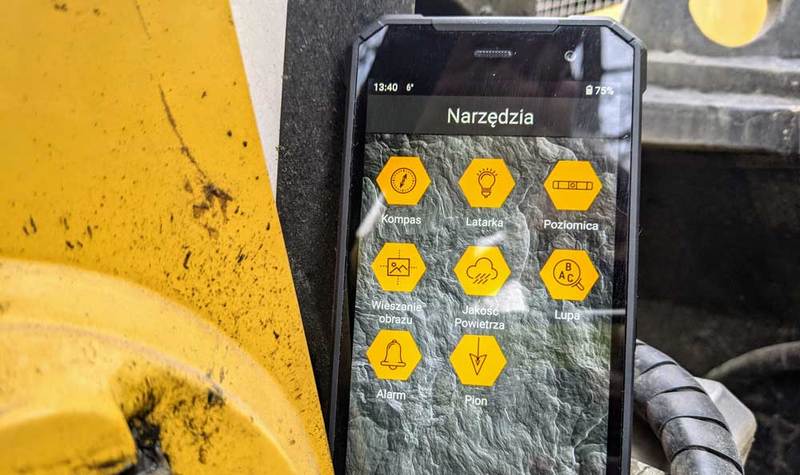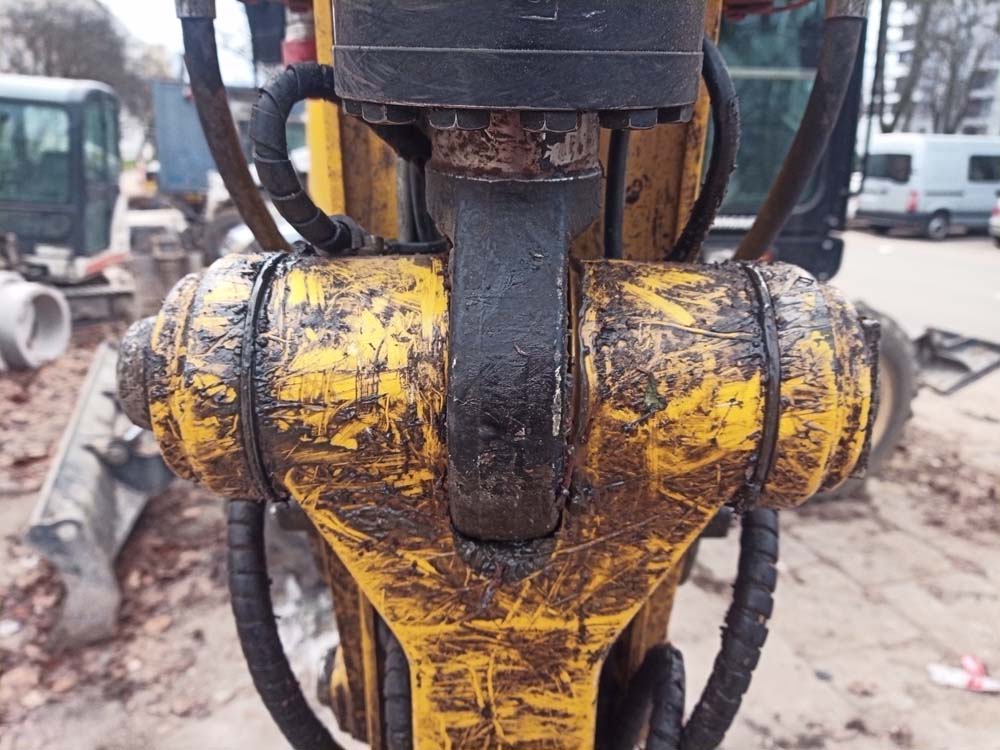Polish company mPTech specializes in the production of armored smartphones. The group of their recipients may not be too large, but it is very demanding. Practicality and durability come to the fore in these devices, modern design is not important. Their users do not pay attention to goalless displays or low weight, so what is a disadvantage in other phones may be an advantage here. What counts is a loud bell so that you can hear it at the construction site, a good range so that you can talk in all conditions and a long-lasting battery. The photos will not be the most important either – they have to be enough to document the work progress or the broken part – no one will require artistic shots. This, of course, does not mean that the phone should be just any kind. On the contrary, it must meet different requirements than any “normal” smartphone. And it should also be assessed in this slightly different way. Hammer Explorer Pro is the flagship, most expensive smartphone in the brand’s portfolio .

How do we rate design?
Hammer Explorer Pro it is primarily a large and heavy phone. The dimensions are 160 x 77.2 x 14.8 mm and the weight is 273 g. It’s also nice in its category. The backs are made of black plastic / rubber combined with gold – acc. To specification, and more orange according to my eye, metal. It is a pity that on some parts of the rubber we have a fine texture in which the mud easily penetrates, and then it is quite difficult to get out of it, even washing the phone under a strong stream of running water. The rubber covers all the protruding parts of the housing, i.e. corners, backs and clearly protrudes above the screen surface. As a result, it should be less likely to break during a fall. The fingerprint reader is placed on the back, at a good height. It works at a sufficient pace. Unfortunately, it fails completely when the finger is wet or very greasy, and such hands will probably reach it quite often. Fortunately, we can alternatively unlock the device with the face and this method works well, especially when we set the option that the screen wakes up by itself after being lifted.
Above the reader there is a single camera eyelet with a LED flash. Unlike normal phones, instead of protruding above the surface, they are delicately recessed and additionally secured with plastic.

There is a single speaker on the bottom edge. A stereo would certainly be better audible, but the level of noise it can generate is admirable. Even at the construction site, we should hear someone calling us. There is also USB-C and here is another note. Since the phone is secured from the bottom with a layer of rubber, getting to the charging socket requires a bit longer than a standard USB plug. Therefore, if we lose the company cable, we may have a problem with charging the device. On the right side there is a power button, above it there is a drawer for a hybrid dual-SIM. To remove it, we do not need a pin, just lift it with your fingernail. It is of course sealed, the phone meets the standards: IP69, IK07, MIL-STD-810G. We can use two numbers and then there is no space for a memory card, but the phone supports e-SIM. On the top edge is a laser pointer (cats love it) and a mini-jack input for headphones. On the left side at the top there is a pleasantly clicking and well-felt button under the finger to adjust the volume, below it a side button to which we can assign any action – separate for long and short press.
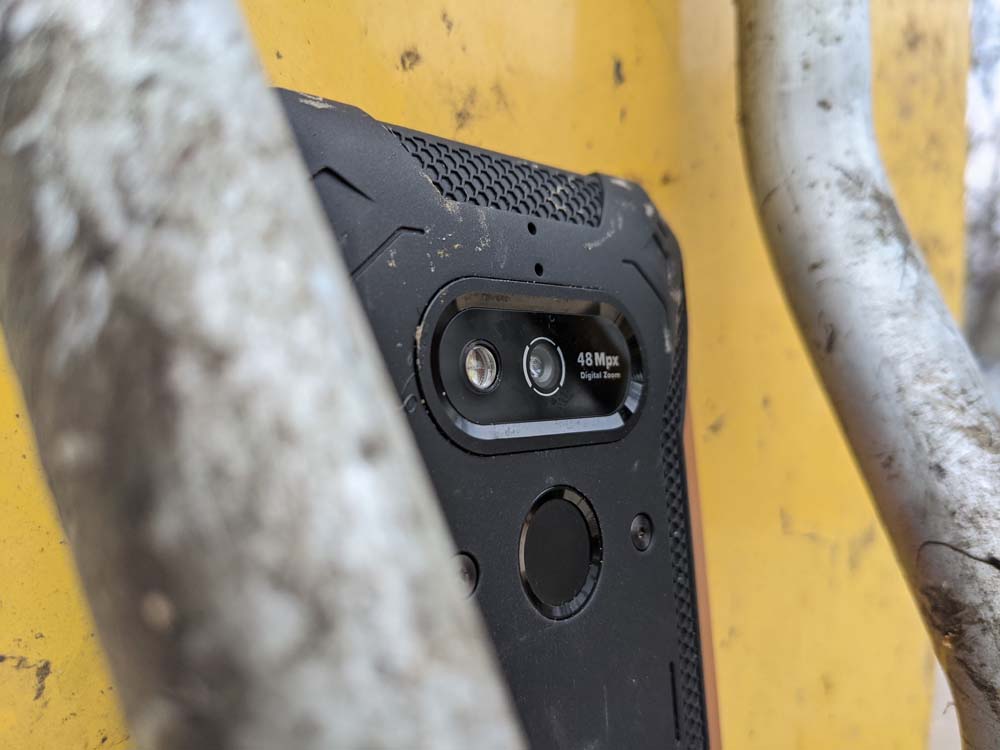
What do we think about the display?
The panel has a diagonal of 5.7 inches, FHD resolution 1080 x 2160 pixels, 424 ppi and is made in IPS TFT technology. Compared to “normal” phones, the screen is small – most of them, despite their smaller size, have panels above 6 inches. Here, however, the old structure bows with gigantic spaces above and below the display. The upper one was used at least in some way, because there was a place for the notification LED. It is very useful because we don’t have to reach to the phone with dirty hands to check if someone has called us – you can see everything from a distance. Also, the loudspeaker for calls below the edge works very well, the interlocutor is clearly audible in all conditions, so the phone fulfills its basic function.
The display itself is of average quality. FHD resolution is good, but color intensity or viewing angles are not. Apart from the dark theme and the night backlight, we will not find any options to change the screen settings. I have not found any information about the oleophobic coating anywhere, and the panel is more greasy than other smartphones. Perhaps the manufacturer decided that it is not worth investing in it, as the phone will be handled with very dirty hands most of the time, and after work you can simply wash it under running water.
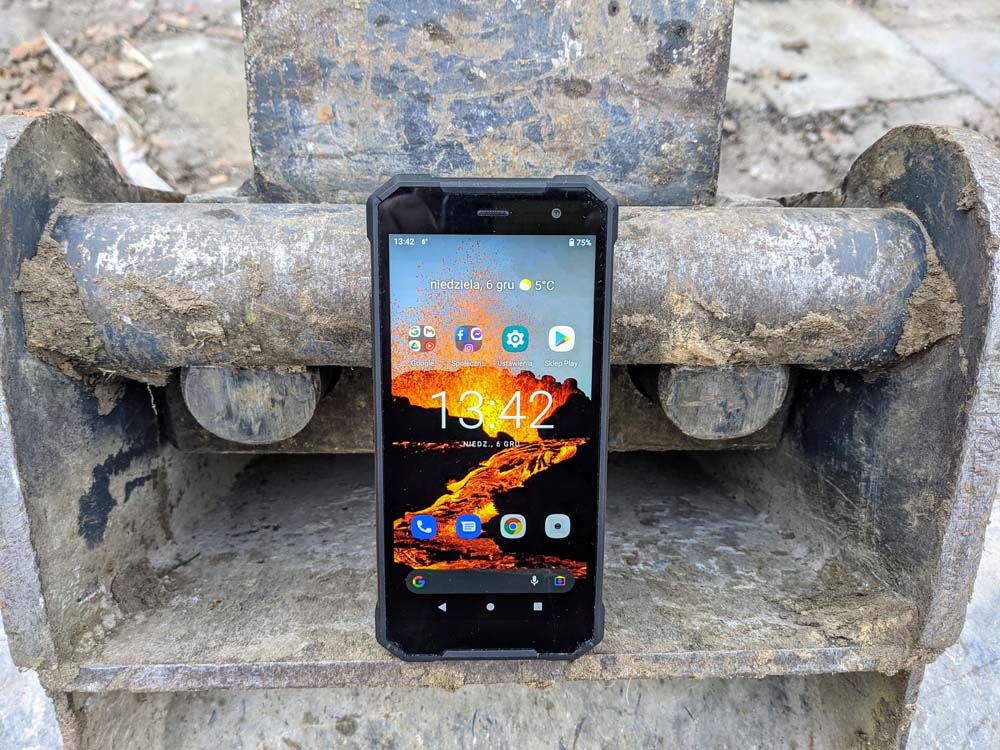
Specification and operating system – rating 4
The phone is powered by a MediaTek Helio P60 MT6771 processor. For this we have 6 GB of RAM and 128 GB of built-in memory with the possibility of expanding with a card. In AnTuTu Benchmark, the system reaches 166,166 points. Hammer Explorer Pro it works at a decent pace, there is no question of any great fluidity, there are some cuts in the animation, but it’s also hard to complain about it. He keeps tabs in his memory very well, does what he has to do, is a typical workhorse.
GPS works without a problem, and the manufacturer has not forgotten about the NFC module, so we can pay contactless with it. The call quality is very good.
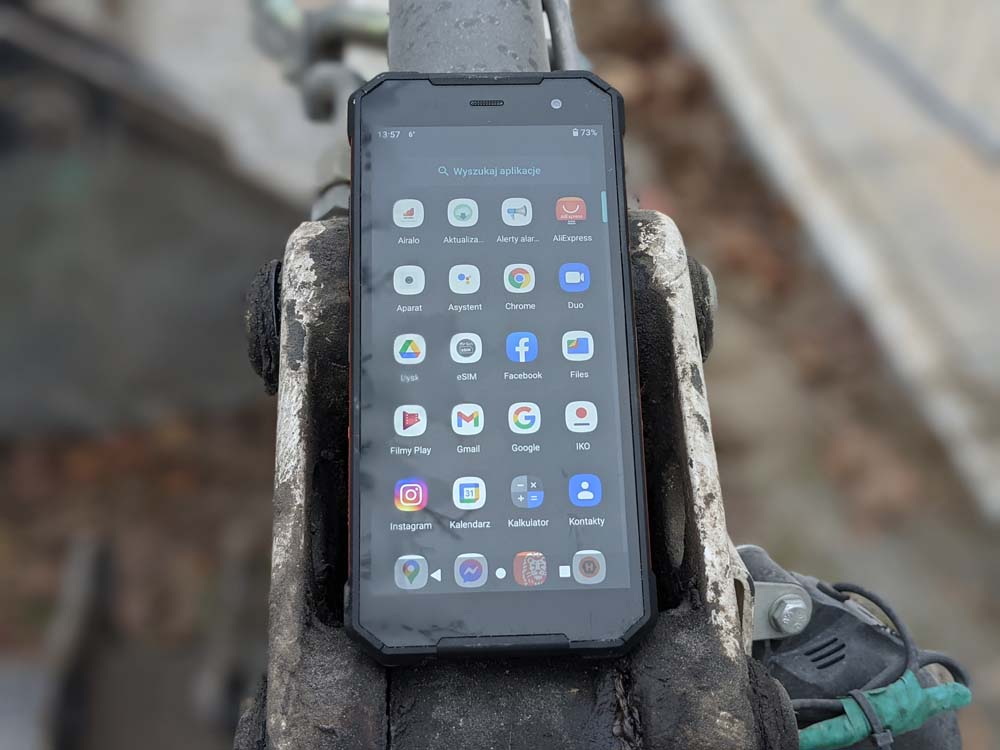
The problem begins when we look at its price. Phones with a similar specification currently cost several hundred zlotys. Of course, in armored phones you do not pay for a processor, which is by definition not top-of-the-line, but here the difference between costs and performance is very large.
The communication package includes: LTE, WiFi ac 2.4 / 5 GHz, Bluetooth 4.2 and NFC. The set of sensors are: accelerometer, proximity, light, magnetometer, gyroscope, gravity, fingerprint reader. The location is carried out using the following standards: GPS, A-GPS, Glonass.

Hammer Explorer Pro runs Android 10 with September’s security and December 2020 system update. It’s basically a clean system that the company supplemented with a few additions, but interestingly it took a few things away. For example, we do not have the option to navigate with gestures – apparently the manufacturer decided that traditional navigation buttons will be more practical. It’s also a pity that we can’t pull the top bar with gesture notifications from anywhere on the screen, but we just have to reach the edge. And the screen response to touch is not the best, in the AnTuTu Multi-Touch test it responds to five points, while it is usually 10 points.
The accessories from the manufacturer are: FM radio, sound recorder, eSIM and a set of tools: compass, flashlight, spirit level, picture hanging, magnifier, alarm, plumb, laser and air quality measurement.
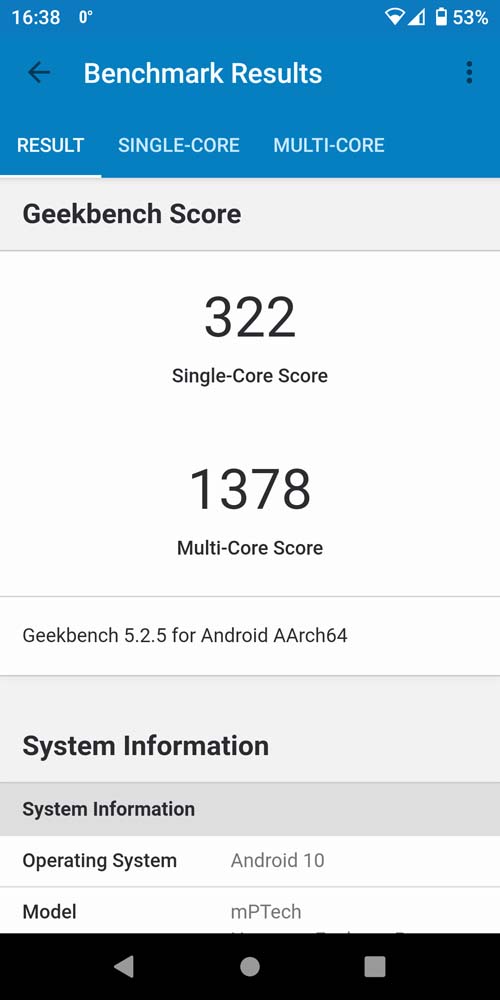
What photos does he take and what films does he record?
The camera set is definitely basic. It’s a 48MP Samsung S5KGM1 lens with AF, f / 1.8 on the back and an 8MP selfie lens. There is no wide angle, the maximum digital zoom is 4x. At the start, photos are set at the maximum resolution of 48 MP, so it’s better to change it to 12 MP. We have: short movie, slow motion, movie, photo, portrait and night photo. There is also an HDR mode.
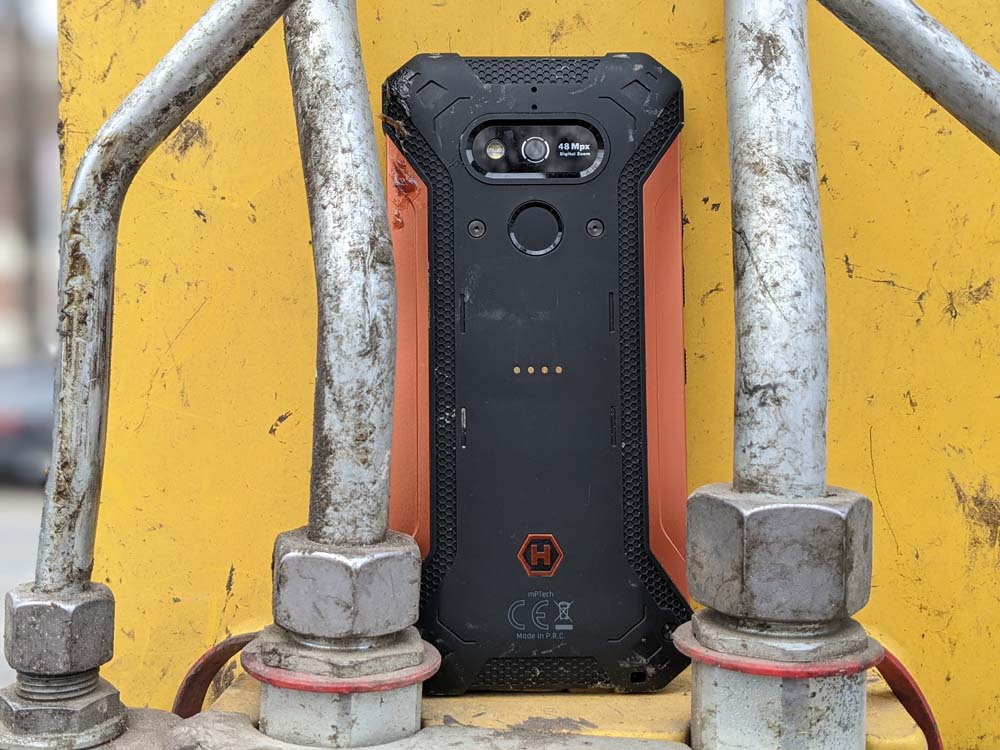
The photo quality is poor. They are usually overexposed with washed out colors, so it’s good to improve their quality in the built-in Google editor. Also, the amount of details is satisfactory only in good light, on a cloudy day or after dusk it is simply bad. The night mode is not impressive. We will record videos in the highest FHD resolutions on the back and HD on the front. There is no stabilization, quality is bad. The phone is therefore more suitable for documenting the progress of construction works, photographing parts or mechanisms of the car, and for “civil” applications it is better to choose any other smartphone.
Sample pictures:
How long does the battery last?
The cell has a large capacity of 5000 mAh. This, however, despite the small size of the screen refreshed at 60 Hz, is enough for one and a half or two days. I expected a better result. Perhaps it is influenced by the MediaTek processor, perhaps not the best software optimization, in any case in other devices with the same battery two days of work were a repeatable standard. There is no inductive charging, charging with a 15W charger takes more than two hours.
Hammer Explorer Pro – Conclusion
Hammer Explorer Pro is certainly a solid, durable device and even nice in its category, there are also no major flaws in it. The call quality is very good, the loudspeaker is very loud, the operation is good and the battery is sufficient. The basic objection can be made to the screen and its sometimes unsatisfactory response to touch, but above all to the price. Similarly, competitors’ smartphones with a more efficient processor, larger screen with more modern proportions or a richer set of cameras are valued. Against them Hammer Explorer Pro basically only one defends itself – e-SIM support.
The main advantages and disadvantages of Hammer Explorer Pro
Advantages of Hammer Explorer Pro:
- Durable construction
- Good action
- Notification LED
- Very loud ringtones
- E-SIM support
- Attractive appearance
- Customizable SOS button
- Waterproof
- Good call quality
- A rich set of sensors
- Air quality can be measured
Disadvantages of Hammer Explorer Pro:
- High price
- Inability to navigate the phone with gestures
- Disappointing runtime for such a large battery
